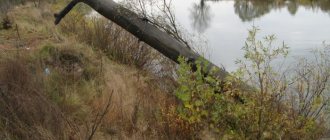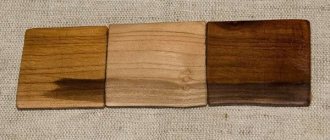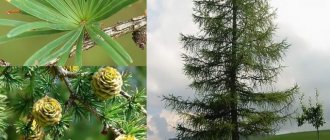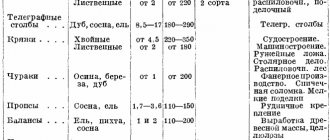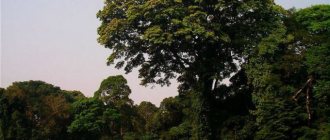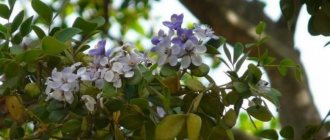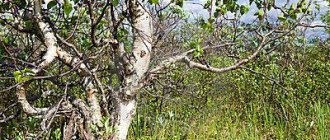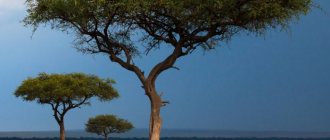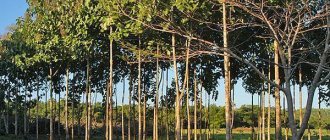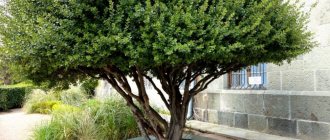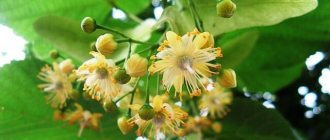Long-term natural processes contribute to the transformation of wood species. This concept can mean not only negative influencing qualities, but also positive ones. As a result of being under water for tens, hundreds of years, or even millennia, oak trunks acquire invaluable qualities, becoming extremely hard and receiving a unique color of a singed or even blackish tint.
Underwater, the integrity of oak is preserved due to a unique characteristic - the presence of a special tannin in the structure of the tree.
Bog oak is a component of a refined and expensive interior.
Features of the reaction
Changes in the physical and mechanical characteristics of wood associated with the passage of complex chemical reactions: leaching of water-soluble substances contained in the cell walls. The process has been proven by the results of numerous studies conducted by N. T. Kuznetsov back in the 30s of the last century.
As a result, it was possible to establish that stained wood contains 75% less water-soluble substances than natural wood. This indicates an increase in cell porosity and a decrease in their density, which results in an increase in the moisture content of the saturation limit, balancing shrinkage, and maximum humidity. It is this factor that explains the absolute shrinkage of boards or workpieces during drying of the sawing material.
The analysis data contributed to the development of thought and the formation of a new technology for drying wood and blanks made from it with a thickness of up to 22-32 mm in a convective or convective-microwave oven, or a vacuum-dielectric drying unit.
The use of advanced technologies has resolved the issue of temperature treatment of wood. There is virtually no internal or external cracking. Collapse in such cases is unacceptable.
The interesting concepts put forward by researchers and scientists do not end there. The study of the properties of stained wood is at the stage of processing geoanalysis data and continues its evolution in the world.
Processing methods
To improve a number of performance indicators, lumber is subjected to primary and finishing processing. Staining is practically not used when working with oak, but is used for cheaper types of wood. When drying oak, try to avoid accelerating the process, as this leads to the appearance of defects.
The main methods of processing finished oak products and semi-finished products:
- atmospheric and chamber drying in gentle temperature conditions;
- staining – gives a darker color and highlights a beautiful oak structure;
- varnish coating – often used after staining to consolidate the visual effect;
- impregnation with oils – used for individual decorative elements.
The video will tell you how to bleach oak wood:
Features of oak extraction and processing
The process is complex and labor-intensive, and not every specialist can handle wood processing. Despite this, the products deserve the highest praise due to their qualities.
Important! If you plan to process or decorate the surface with stained wood, then try to prepare the material in advance. It takes more than one year to process wood.
To obtain such valuable material, water areas of significant volumes are examined, especially the bottom of reservoirs. Moreover, the work is carried out in very difficult conditions.
How is a tree brought to the surface?
Having discovered the trunk, the bog oak is lifted ashore. In this case, it is impossible to do without the use of technology, since one tree weighs around 10-20 tons. Before starting to saw the material, the wood pulled out of the water is assessed at the first stage for quality. Sometimes a tree that has been taken out of the water and prepared for processing is completely unsuitable for further work. As soon as the material is cut, the production of parquet, furniture, doors or window frames immediately begins. Untreated stained wood, kept under water for many years, quickly becomes unusable on the surface. Therefore it must be processed immediately. As you have most likely noticed, extracting bog oak is a labor-intensive process.
Alder
Alder is a diffusely vascular, coreless sapwood species.
Properties
Alder wood is white when freshly cut, but when exposed to air it turns from orange-yellow to yellow-red or reddish-brown. The sap only stains the surface layers of wood. Alder wood is painted into a stable light chocolate color with a pinkish tint only after it has been dried and aged.
Freshly cut alder wood has a moisture content of about 110%. Maximum humidity during water absorption is 185%. Alder (black and gray) is a low-density species. The average density of alder wood at standard humidity (12%) is 525 kg/m3, absolutely dry - 595 kg/m3, base density - 430 kg/m3.
Alder wood is not durable, but has a fairly uniform structure, making it easier to process. It is soft, light, cuts well, warps little when dried, has good dimensional stability, and can be easily etched and polished. It lasts a long time under water and is easy to paint, pickle and polish.
Application
Alder wood is suitable for carving. It is also used to produce veneer, both peeled (for plywood) and planed (for finishing furniture and other products). Smoother and thicker trunks are used for crafts, carpentry and turning. Finds application for small underwater structures
In the modern furniture industry, gray and black alder are treated with ammonia (ammonia vapor) and then pressed. After such processing, alder wood is much superior to walnut wood in terms of technical and decorative properties.
Alder is readily used for easel and chamber sculpture, wall carved panels and decorative tableware. They are always used where contact with water is inevitable: in bridge construction (piles), house construction (gutters), and cooperage.
Scope of application of the material
Even if you have never heard of such a material, you can imagine that this type of wood is used in not one, but at least five applications.
Due to the fact that bog oak is a rather rare and even more valuable material, it requires fine manual processing.
Most often, furniture and souvenirs are made from wood, which are doomed to turn into antique objects. It is worth noting that flooring or other types of coatings used in interior design have a long service life.
Classification of tree species by density
The following types of wood are distinguished according to density:
- Rocks with low density: from 1 to 540 kg/m3.
- Rocks with average density: from 541 to 740 kg/m3.
- Rocks with high density: from 750 kg/m3.
The largest number of trees with dense wood grows in Europe, North and South America. Backout has the highest density (up to 1300 kg/m3). The densest wood species are indicated in the State Reference Data System, controlled by the State Standard of the Russian Federation.
Is it possible to produce bog oak under artificial conditions?
Thanks to the development of innovation and the movement of technological progress, changing the natural characteristics, properties and performance of natural wood seems possible. Today, scientists are able to successfully imitate the stained wood color, maintaining aesthetic and durable characteristics, and achieving maximum moisture resistance.
Another option is staining oak at home. This option is simple and affordable and is ideal for those who want to get an unusual oak material with silver veins inside.
For this, stain is useful - a special mixture that imitates the color of natural moraine wood.
Apply the product in two stages: the first time on the surface of the wood at a slight slope, making strokes across the grain, the second - along. During work, use a flat, wide brush - a flute, intended for applying stain and simulating imperceptible natural transitions of tones. This is the best tool, characterized by softness and at the same time elasticity of the pile. Stains are often used to imitate the “stained oak” shade of laminate flooring.
Table of reference density values for tree species
Since standardized density values for wood have a group appearance, I had to look through English reference books to collect density values by tree species.
The following table was obtained: Wood density of the most common tree species
| Wood species | Wood density kg/m³ |
| Balsa (Balsa) | 120-160 |
| Siberian fir | 390-430 |
| Northern spruce | 400-450 |
| Sequoia evergreen | 410 |
| Poplar | 400-500 |
| Willow | 460 |
| Pine | 450-500 |
| Alder | 490 |
| Aspen | 510 |
| Linden | 530 |
| Red tree | 540 |
| horse chestnut | 560 |
| Edible chestnut | 590 |
| Cypress | 600 |
| Bird cherry | 610 |
| Sapelli | 620 |
| Hazel | 630 |
| Walnut | 640 |
| Birch | 650 |
| Cherry | 660 |
| Smooth elm | 660 |
| Larch | 660 |
| Field maple | 670 |
| Teak | 670 |
| Pear | 690 |
| Oak | 690 |
| Afromosia | 700 |
| Switenia (mahogany) | 700 |
| Sycamore | 700 |
| Zhoster (buckthorn) | 710 |
| Beech | 720 |
| Hornbeam | 750 |
| Paduc | 750 |
| Tiss | 750 |
| Ash | 750 |
| Dussia | 800 |
| Kempas | 800 |
| Plum | 800 |
| Lilac | 800 |
| Hawthorn | 800 |
| Rosewood | 800 – 1000 |
| Pecan (cariah) | 830 |
| Yarra | 830 |
| Merbau | 840 |
| Jatoba (mareil) | 840 |
| Keruing | 850 |
| Kulahi | 850 |
| Turmoil | 850 |
| Wenge | 900 |
| Lapacho | 900 |
| Olive | 900 |
| Sandalwood | 900 |
| Panga-panga | 950 |
| Boxwood | 960 |
| Lim | 970 |
| Sucupira | 1 000 |
| Kumara | 1 100 |
| Ebony (Persimmon) | 1 080 |
| Ebony | 1 160 |
| Quebracho | 1 210 |
| Guaiacum or bakout | 1 280 |
What is included in wood stain?
Impregnation is made on the basis of three components:
- Water. Water-based compounds are better absorbed and are more quickly absorbed by wood. During the processing process, the wood needs to be dried, which takes more time. The result is a uniform shade that can be easily adjusted with a sponge. After waiting for the material to dry completely, it is covered with paint and varnish.
- Ethyl alcohol. It lends itself to instant evaporation, therefore it requires high-quality and quick application and caution in actions. Work with such impregnation only with special gloves and a mask. Otherwise, it will not be possible to achieve uniform tinting of the material. Therefore, craftsmen prefer to work not manually, but using special equipment - a spray gun.
- Alkidov. In addition to obtaining wood in the desired shade, alkyd stain allows you to increase the resistance of the material to external negative factors acting on the material. Therefore, coating the product with varnish can be skipped, except for shine.
Remember that home-dyed raw materials can be easily distinguished from natural bog oak. Therefore, artificial material is often used in baths, saunas, swimming pools, and other rooms with high humidity.
Birch
Birch is a wood obtained from two types of trees: silver birch and downy birch.
Properties
The density of birch wood is about 650 kg/m³ (with a relative wood humidity of 12-15%). Elastic and viscous, has average bending strength, and is difficult to split. At high humidity, without special protection, it is easily attacked by fungi and quickly rots.
Birch is relatively well processed with hand tools or using machines: it can be planed and milled; turning or carved parts can be made from it; holds fasteners (nails, screws) well and sticks together.
Application
Furniture, plywood, laminate, wood slabs, tools, fittings, turning products, veneer, etc. are made from birch wood.
Why is stained wood popular?
Back in the days when man had just begun to explore the Earth, wood took a reliable ally position as the first available material. No matter how the conditions and the development of scientific and technological progress develop, natural wood has always been in demand, and this trend will remain leading for many centuries to come. Eco-friendly wood is not only safe, but also gives the room a special charm and comfort.
Considering that ordinary wood has become not so interesting in recent years compared to other progressive materials, it’s time to collect laurels for stained wood. In terms of strength characteristics, the material resembles stone due to the properties obtained during the period of being under water.
The color of bog oak is not the main advantage that makes the material preferable in choice. Rested wood is not afraid of cold, moisture, or pests that destroy hectares of forest. Stained material does not require specific care or additional processing. At the same time, it remains the standard of naturalness, environmental friendliness, and purity.
Basic Concepts
There is a concept in physics in which the specific gravity of wood is calculated with and without voids, as for a volumetric solid physical object. The substance that makes up wood is practically independent of different species. The reference books use a calculated value of 1.54 g/cm3. Thus, in 1 m3 of tightly compressed substance without leaving voids there will be 1540 kg of material.
The density of wood is determined by a formula known from a school physics course
If you determine the density of wood taking into account porosity, then knowing the specific gravity helps. In this case, the conditional volume is not affected by the shrinkage coefficient, and it does not need to be recalculated to include a humidity of 10-17%. The approach helps not to complicate the calculation, but to obtain a consistent result while comparing several different samples.
Breed classifier
You need to know that the densities of different wood species vary significantly in value.
Traditionally, it is customary to divide the harvested volumes into three conditional groups according to density:
- Small – below 530 kg/m3. This group of trees includes many industrial coniferous species, for example, spruce, pine, cedar varieties, all varieties of linden and willow, as well as common chestnut, the vast majority of aspen varieties, white and gray walnuts.
Although Angara pine is considered the standard for hardness, it actually belongs to a loose wood species
- Average - no more than 740. The group corresponds to the density of dry silver birch, all varieties of larch, popular varieties of pear, beech and elm. It is definitely worth including varieties of hazel, maples of known varieties, rowan, persimmon and apple trees of different varieties. The list would not be complete without walnut and common ash.
The specific density of silver birch belongs to the middle group
- Dense – from 740 onwards. The density of firewood of this group is in demand for strong, durable structures. It’s not for nothing that ironwood, boxwood and pistachio are included here. The list would be incomplete without white acacia, hornbeam and chestnut oak.
Furniture and flooring made from oak can withstand many years of use.
For reference, it is worth knowing that the popular table of wood density of various regions includes such exotic materials as balsa, which has a very unique value of 0.15 g/cm3. This is 4 times less than the comparable volume of dried birch. When compared with spruce, which is 2.5 times heavier, the structure of the equatorial exotic also wins.
Backout has the opposite characteristics. A cubic meter of such material will deflect the scales by 1.3 tons. The slow-growing tree grows in Cuba, Haiti, and Honduras. The material is quite difficult to process due to the resin present in the structure. It is used to make pins, bowling balls and even bearings.
VIDEO: Characteristics of the main hardwood and softwood species
Relationship between texture and properties
It has been proven that the density of wood depends on how much liquid is stored inside its structure. First of all, water increases the mass of the selected volume, and secondly, it stimulates the swelling of cell walls, which leads to expansion of the volume. This leads to the fact that the average density of wood is determined in the complete absence of liquid or at a certain percentage of it.
It is unlikely that it will be possible to find the value for the most dried preparations, since they will absorb moisture from the atmosphere at any opportunity. In the classic version, measurements are carried out when a certain equilibrium state is reached.
Physical calculations sometimes include a base value. It is the ratio of the mass of a completely dry workpiece to the maximum possible volume in the swelling state. The latter is typical for workpieces that have just been cut, in which sap flow has just recently occurred, or for workpieces that have been in water for a long time.
Density, porosity and permeability of wood
The value is influenced by the growing environment. In domestic latitudes, plants are most often found whose dry wood density varies between 350-920 kg/cub.m. For example, the density of pine, like the density of aspen, falls in the middle part of the interval, since it is about 500 units. If we take the density of oak, then it is closer to the upper threshold, depending on the degree of moisture saturation, it is 700-750 kg/cub.m.
The structure of wood depends on the permeability of liquids and gases under pressure. This feature is influenced by a system of communicating cell cavities. The dry cell wall has low porosity. Its components are usually in a glassy state.
Characteristics of popular types of wood
Density table of popular wood types
In addition to dry statistics, we will provide a brief description of some types of wood to understand the nature of determining density.
Larch
Larch
Blanks made from this material are quite strong and durable. In its hardness it is comparable to oak. Warping has little effect on larch, which is why it is often used as a building and finishing material.
Cedar
Cedar
All varieties of cedar trees have wood that is similar in color. Its structure contains a large amount of oils and resins, which give the preparations a characteristic pleasant smell. The growth rings are clearly visible in the cut, as there is a noticeable contrast in the early and late wood zones. Traditionally, the fibers are arranged straight, and a characteristic feature of the formation of the pattern is the presence of pockets of bark ingrowth.
Bog oak
Bog oak
These are forests that drowned many years ago, which, without access to oxygen, hardened at the bottom of reservoirs. It is distinguished by its unique color scheme and durability during operation.
Aspen
Aspen
The soft, but at the same time dense texture is perfectly processed with a metal tool. Thanks to this flexibility, it can be easily sawed, milled, and peeled. It is also easy to glue individual elements together. The disadvantage of the material is that it is difficult to polish.
Linden
Linden
The wood, which is light in longitudinal and cross sections, has a slight brownish or reddish tint. Well processed. Workpieces with a greenish tone are considered rare.
Alder
Alder
A freshly cut piece quickly darkens, acquiring a yellowish or orange color. After treatment with drying oil or oil, a uniform tone is obtained, distinguishing it from other breeds. The board contains core repetitions like dashes.
VIDEO: How to take into account the properties of wood in products
How does it happen that the result is stained wood?
The whole secret is in tannins, which, as a result of the formation of compounds with iron salts, are transformed into super-strong and durable ones. Stained oak boards can be called a reborn material with unique characteristics.
Interesting! Timber has been floated naturally down major rivers all over the world. The banks of the rivers were fortified with oak groves, and when the trunks fell into the water, they remained there to be naturally processed by the elements of nature. About 90% have already been processed, but some of the trees were washed away with silt and remained under water to this day, acquiring even greater value.
The use of stained wood in construction
Guess why such a house will not be afraid of snow, rain, windy or frosty weather. All thanks to the “school of survival” that the wood underwent at the bottom of the bay, polynya, lake, pond or other body of water where it was located.
The main advantage of building from stained wood is environmental friendliness. It’s hard to imagine an even more natural material for constructing a residential building. Bog oak siding looks interesting.
What makes it a unique material, ideal for construction, is the lack of shrinkage during the drying process. Newly rebuilt housing is completely ready for use without risks to human life and health.
Stained wood in the interior
To create a unique style they often use:
- larch;
- birch;
- oak.
The only requirements for the material used in interior decoration are environmental friendliness and aesthetics, and products made from bog oak fully satisfy these requirements. Often in mansions you can find parquet made of bog oak, which looks unsurpassed.
Wooden buildings of this type are not afraid of any fungi or insects. Therefore, such a coating does not require additional treatment with protective agents, and this is another plus for the environmental friendliness of the house.
The price of wood starts from 12,500 rubles per 1m3. It doesn’t matter how much bog oak costs, the main thing is that the material is of high quality.
Production of furniture from stained wood
The following are best suited for such purposes:
- oak;
- larch;
- birch.
When describing furniture made of bog oak, a simple name is appropriate - “exclusive material”. The tone and texture of natural wood is unique. The depth of color varies: from light gray to black-blue tones, from pale pink to amber shades.
Interesting! Craftsmen compare the pattern of bog oak slices with a map of the starry sky - the same unimaginably beautiful picture.
Unmistakably, such furniture is an unobtrusive but pronounced sign of the taste and specific level of well-being of the owner of the house.
Multi-level floor
Everything you need to know about furniture nails
To zone the space, craftsmen install floors at different levels. They advise installing a podium to separate the kitchen and dining room. This option is considered one of the most practical because, among other things, the owners have additional free space where they can hide something. It is convenient to use boxes or drawers for this. Wicker baskets will look good. But such space can remain free.
However, such a design should not be made if there are small children in the family, since the podium can become an obstacle for him. In addition, various floor coverings can be used. They will zone the space between the living room and the kitchen and protect the podium from damage. For example, tiles are laid in the kitchen area, and laminate flooring in the dining room. The main thing is to choose colors and textures and combine the finishes correctly.
Manufacturing of products from stained wood
Products made from natural wood that have undergone centuries-old natural processing are widely available on the market. From bog wood they produce:
- stairs of any shape;
- windows “stained oak” (shade);
- window sills;
- furniture panels;
- flooring;
- Wall panels;
- tinted doors “stained oak”;
- siding and other materials for exterior construction and home improvement.
Stained wood is an interesting solution for creating a room in a Scandinavian style.
It's nice to look at the interior when there is something unusual in it. Stained wood is the element that fully meets the needs of the designer, creating new and new things to improve human comfort.
